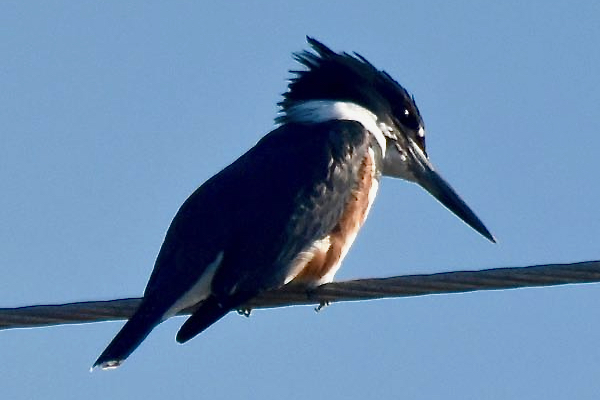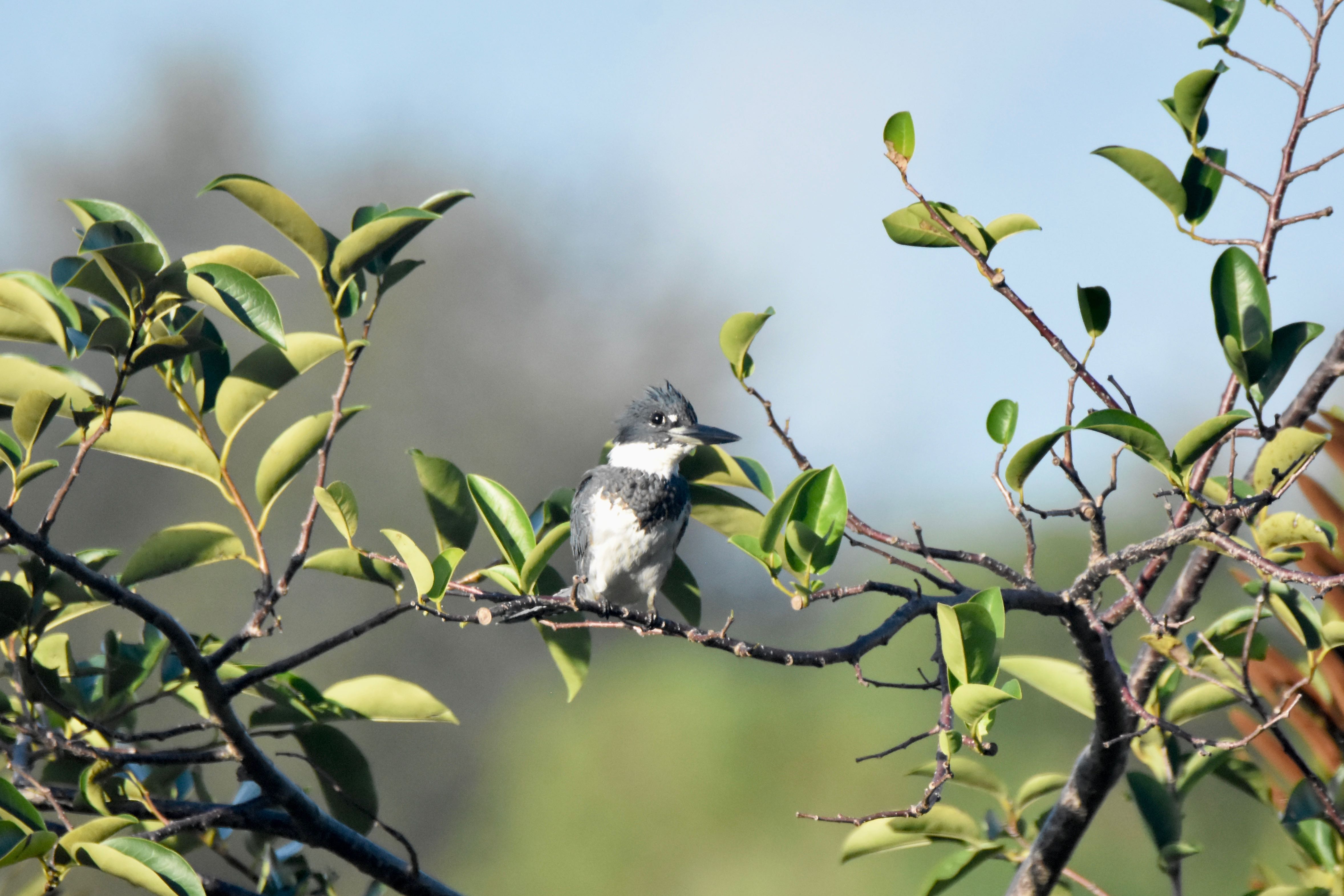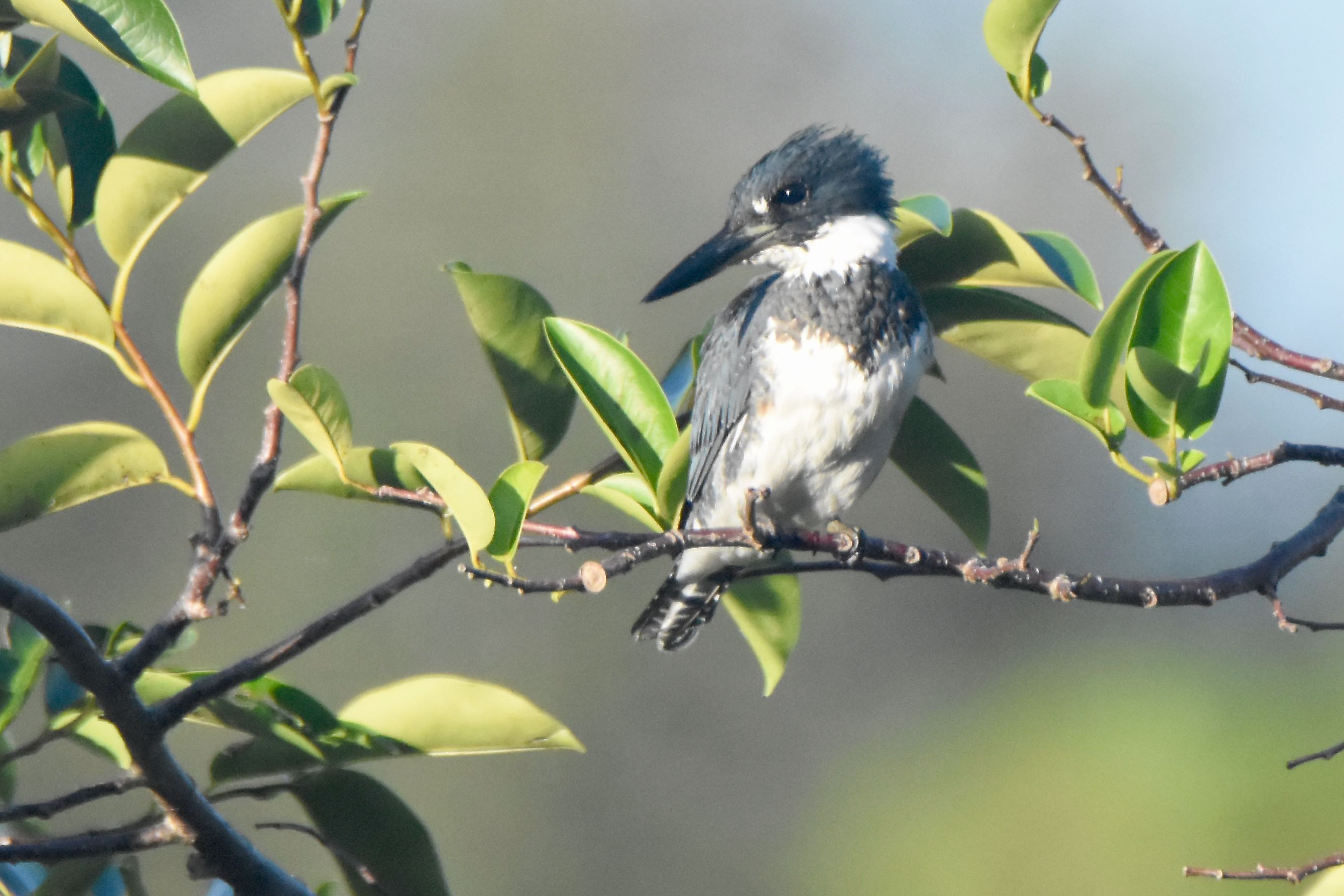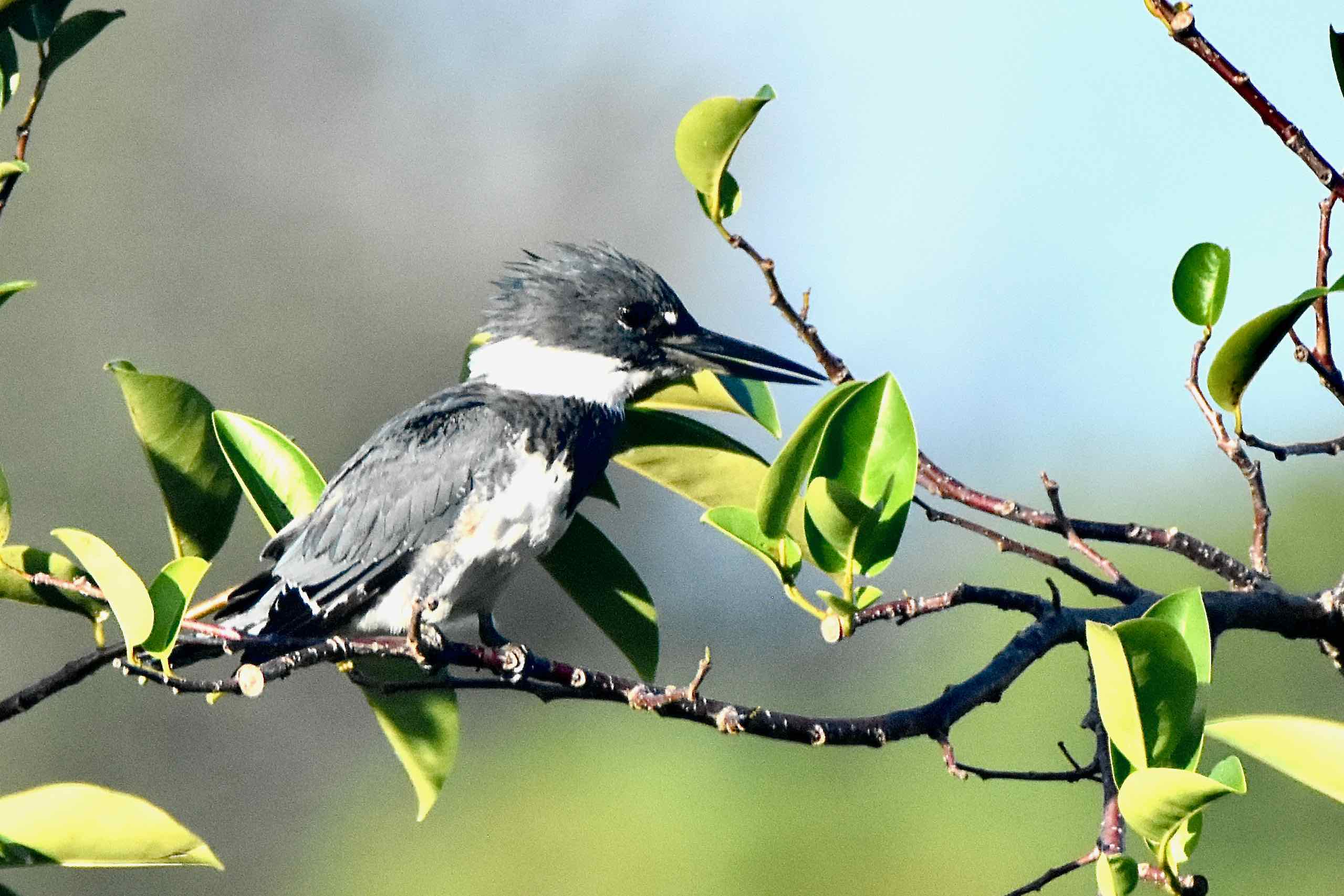
Belted kingfisher, photographed at Wakodahatchee Wetlands, Delray Beach, Palm Beach County, in November 2018.
We call the belted kingfisher the "Don King" of birds because of its distinctive, permanent bad-feather-day look that makes it easy to identify even at a distance.
But what really stands out about the belted kingfisher is its mad hovering skills, its ability to pause in flight seemingly for an eternity while scanning the waters below for a tasty morsel. When it spots what it wants, it dives straight down onto its target.
The scientific world knows this bird as Megaceryle alcyon. It is a seasonal visitor to South Florida, arriving in the fall and staying until early spring. They're a fairly common sight perched on stumps, poles and electrical lines near water.
Its menu includes fish and crayfish, mollusks and amphibians, insects and reptiles. But it will also eat birds, small mammals and berries. It will hunt from a perch as well as while in flight.
Belted kingfishers can be found throughout North America except for the continent's northern-most reaches. Because of their hunting style, belted kingfishers need open water throughout the winter, so it will migrate as far south as it needs to find it. It does live year round throughout most of the U.S. as far south as Central Florida. It will winter here in South Florida, Mexico, Central America and parts of Colombia and Venezuela. They've been known to wander as far as the Galapagos and the Azores, Hawaii and the UK.
Females share the shaggy crest, but also have a rust-red band on the belly that the guys lack, making the belted kingfisher one of the few birds where the female is more colorful than the male. Juveniles have a spotty rust-red pattern.
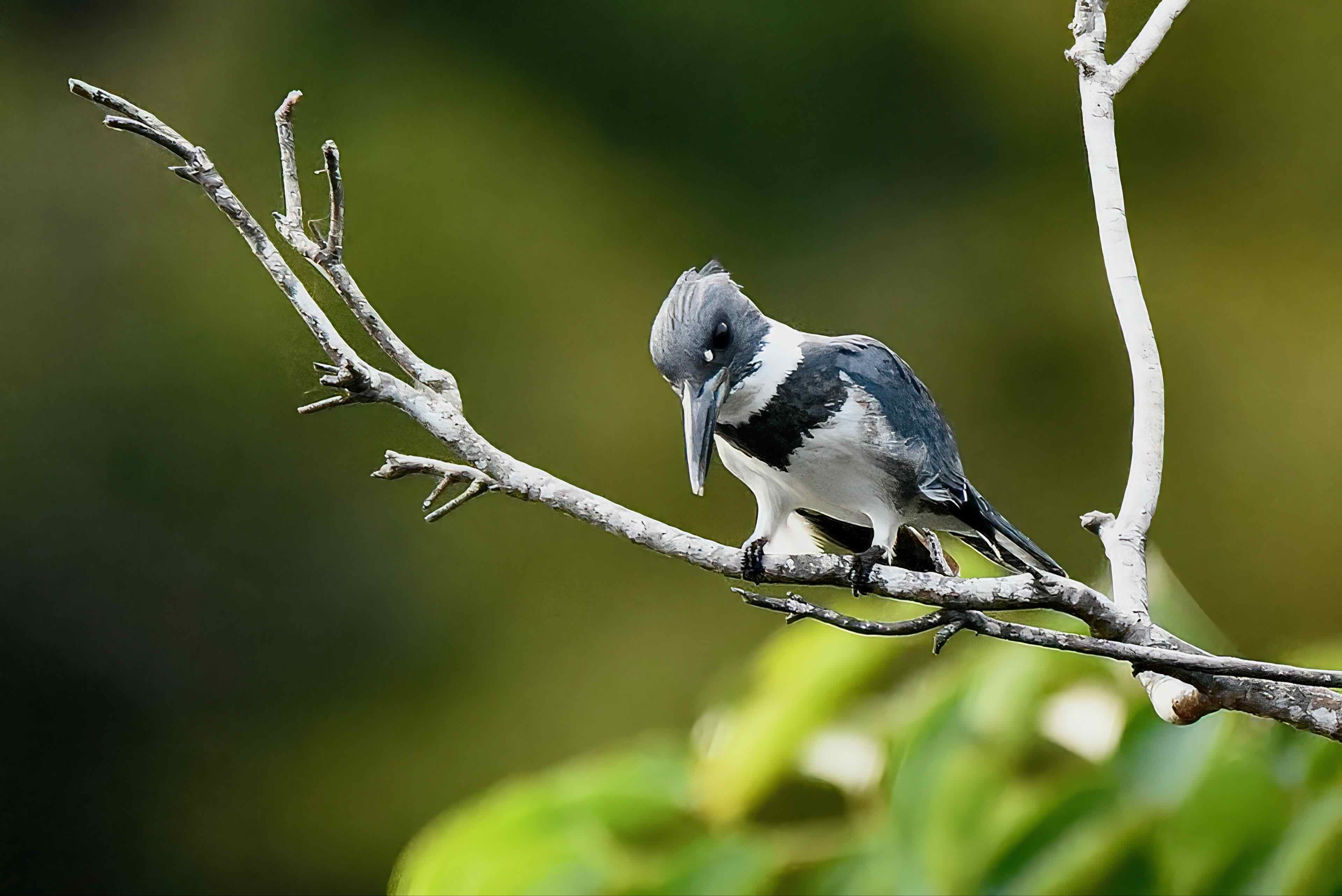
Belted kingfishers can be as long as 14 inches, have a wingspan nearing two feet. Belted kingfishers nest in burrows dug into a soft earth bank, usually along a lake, pond or stream, but sometimes far from water. These burrows can extend 1 to 8 feet into the ground. Near water, they're placed above the highwater mark, and are angled upward to keep the interior dry. Both males and females participate in the digging, which can take as little as a few days or last a few weeks.
Females lay clutches of five to eight eggs, which take about three weeks to hatch. The offspring remain in the nest for about four weeks. Both parents split incubation duties, with females handling the night shift and males taking over during the day. Both also feed their brood — partially digested fish when young, whole small fish as they grow.
Fledglings remain with their parents for about three more weeks, and continue to be fed by them.
Kingfishers are monogamous for the season, and produce one brood if living north, perhaps a second in the south. They are highly territorial birds, and both sexes vigorously defend their turf. Once breeding season is over, however, they split and go their seperate ways, finding new mates the following season. In between, kingfishers are solitary birds.
Belted kingfishers remain common sights throughout North America, but their population has been in slow decline since the 1960s. In recent years, efforts have been made to study the effects of contaminants on these birds but despite their fish-heavy diet, they seem to accumulate only small amounts of toxins. One other theory is that the amount of suitable breeding grounds is declining. Belted kingfishers are highly sensitive to disturbances, and might abandon places where humans frequent.
Fun fact: According to Cornell University Labortory of Ornithology, the oldest fossil of the kingfisher family ever found was 2 million years old and in Alachua County.
Belted kingfishers are members of Alcedinidae, the kingfisher family.
Wakodahatchee Wetlands

